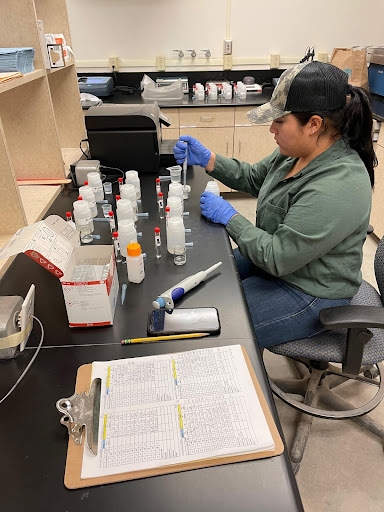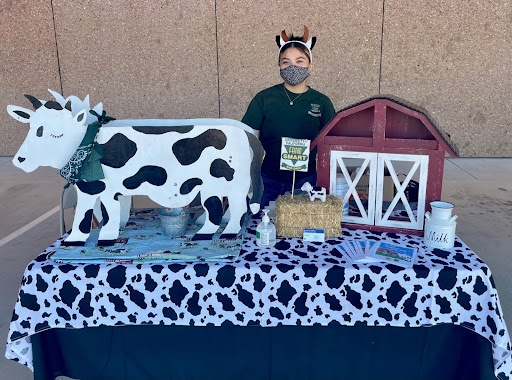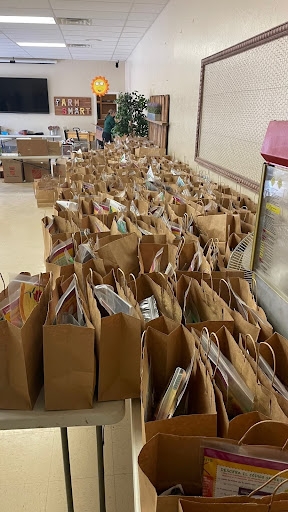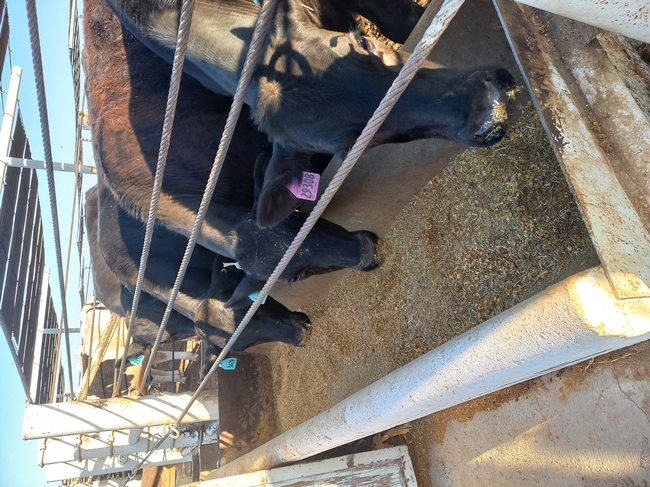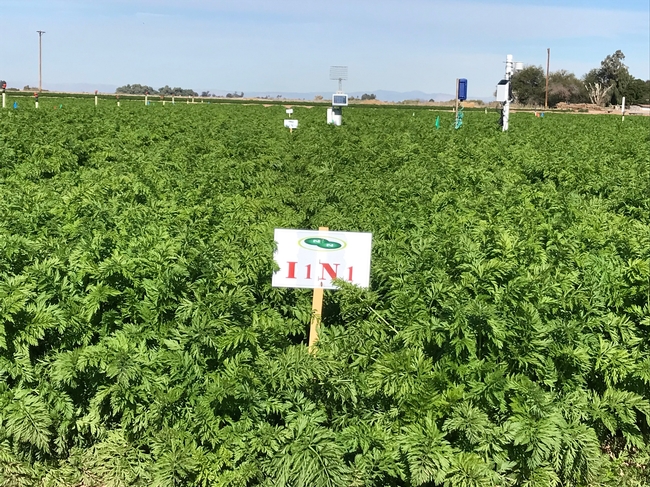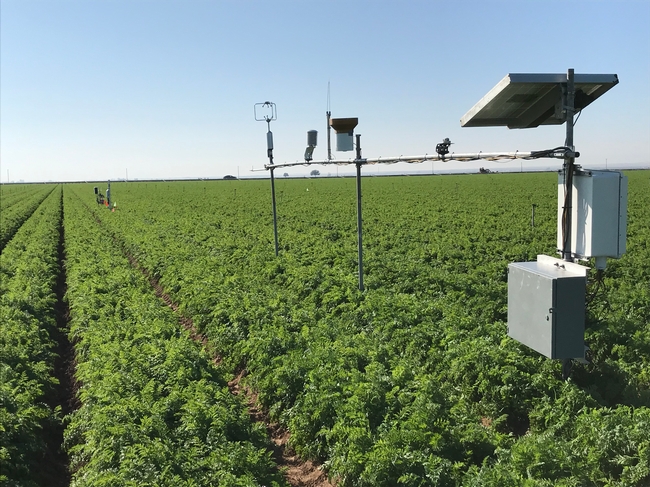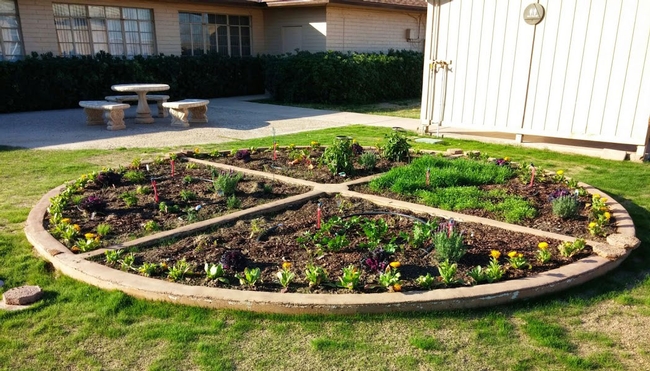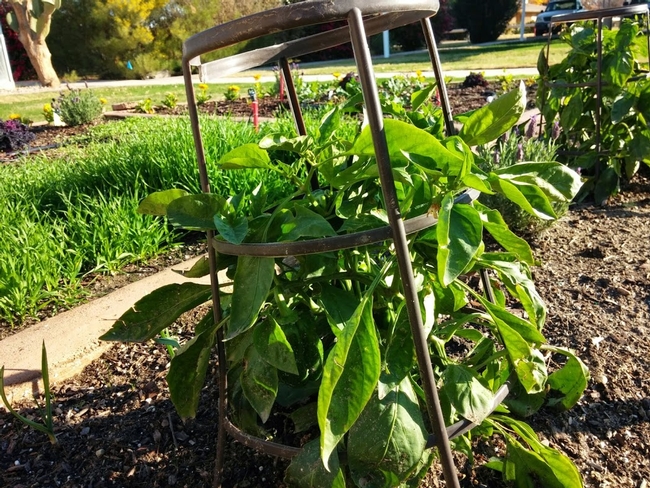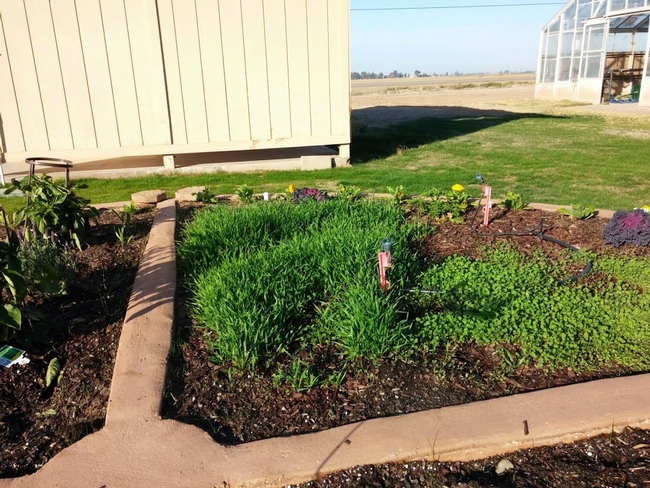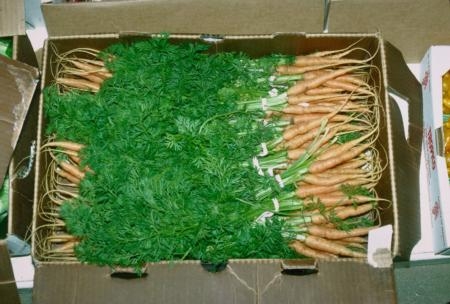Posts Tagged: desert
Desert Research and Extension Center hosts international agriculture student interns
Caring for feedlot cattle, examining onion irrigation practices, and teaching preschoolers about agriculture are not part of the typical college curriculum. But for Desert Research and Extension Center's five college student interns, these activities are what fill their days.
Located on 255 acres of Southern California desert, DREC focuses on advancing irrigated desert agriculture, livestock and feedlot management, and pest management. It is also home to the Farm Smart agricultural education program, reaching approximately 7,800 participants annually.
In February, DREC welcomed the college student interns - creative thinkers working at the intersection of experimental research and agriculture education. During the internship, the students are working on-site under the mentorship of academics and staff members on applied projects. After years of COVID restrictions, the center is excited to welcome the students in person for hands-on engagement with the research and the public.
"Hosting students at DREC helps us to fulfill our mission while training the next generation of professionals," says Jairo Diaz, Director of DREC. "I am particularly motivated to provide experiential learning activities to underrepresented groups in agriculture and STEM careers."
Read on to learn about each of these budding agronomists.
Dianely Alba
Dianely Alba is majoring in agronomy at the Universidad Autonoma de Baja California, Mexico (This university is about 20 miles south of DREC). She is working under the mentorship of Jairo Diaz-Ramirez on a project focused on improving irrigation and nutrient management practices in onion production in Imperial County.
Melina Munoz
Melina Munoz is a student at Imperial Valley College studying elementary education. She is an intern for DREC's Farm to Preschool Festival. Munoz is in charge of developing and translating activities, planning and implementing the festival, and data entry for participant registration and evaluation information.
Lester Nolasco
Lester Nolasco grew up on a farm in Honduras, so he has been involved with animals and agriculture from a young age. He is working under the mentorship of Pedro Carvalho, the Feedlot Management Specialist. Nolasco is currently working on feedlot cattle management and beef cattle nutrition.
“Although my passion is cattle, when you work with these animals, you indirectly learn about agriculture and crops in general because that is also an important part of cattle nutrition,”says Nolasco. Alongside the other feedlot management interns, Nolasco feeds animals, cleans pens, mixes feed, weighs cattle, and does lab work. “It is such a nice experience for me because I had only worked with dairy cattle in the past and this internship is teaching me a lot. I would like to learn as much as I can about beef cattle nutrition. Hopefully, in the future, I will be a professor and share the knowledge I have learned with other professionals back in my country.”
Heitor Otávio Martins de Oliveira
Heitor Otávio Martins de Oliveira has worked with animals throughout his life, starting with his parents' farm. He attended veterinary school, where he continued to learn about agriculture. At DREC, Otávio Martins de Oliveira is working on beef cattle nutrition management. In addition to daily maintenance tasks, he weighs the cattle monthly and provides any necessary treatments.
“I would like to get as much knowledge as I can about nutrition in the USA and then return to my home country of Brazil to work there,” says Otávio Martins de Oliveira. “Maybe I will get a master's degree related to reproduction in cattle.”
Willi Meireles
Willi Meireles was introduced to Carvalho by his professor in Brazil. He is working on evaluating the use of feed additives to increase the performance of feedlot cattle.
“My grandparents own a farm where beef cattle are raised, so since I was a child, I have worked with animals and always liked animal science,” reflects Meireles. “I intend to specialize in ruminant nutrition and, after working hard, be able to have my own beef cattle.”
New research fills gap on best practices for California carrot production
One doesn't need to be a seasoned farmer to know that growing conditions in Canada are completely different than those found in the low desert of California.
And yet, for many years, studies conducted in Canada were used to generate nitrogen uptake data for the California carrot production system, so growers managed their fields based on their own experiences – and that research conducted thousands of miles to the north.
Carrots had been among the crops grown in California that did not have site-specific data to suggest the best source, rate, timing and placement of nitrogen, in the highly variable cropping seasons and locations throughout the state. That's why new information – based on local research and published in August – is invaluable to farmers in Imperial and Kern counties, where the majority of the carrots in California are grown.
Two years of data from two experimental trials at UC Agriculture and Natural Resource's Desert Research and Extension Center – as well as from 10 commercial fields – produced key recommendations for farmers to make the most of their irrigation and nitrogen applications.
“The point is we developed information in your field, based on your practices, your climate, your production system – and this is what is really happening,” said Ali Montazar, UC Cooperative Extension irrigation and water management advisor for Imperial County. Montazar conducted the study alongside Daniel Geisseler, UCCE nutrient management specialist at UC Davis, and Michael Cahn, UCCE irrigation and water resources advisor for Monterey County.
With reliable data gathered under real-world conditions, Montazar said growers now have solid reference points for when – and at what rate – to irrigate and apply fertilizers in the low desert environment. One of the key findings, for example, was that the carrots' nitrogen uptake is generally low in the first 40 to 50 days, so growers are advised to limit their fertilizer application during that period.
Then, by tailoring those basic guidelines to their own site-specific situation and optimizing their practices, growers can maximize the amount of nitrogen taken up by the carrots – and minimize the amount that is leached out.
“Improving irrigation and nutrient management in the desert production system is what local growers are themselves trying to achieve. With improving efficiency and reducing nutrient leaching, we can improve the quality of water in the Salton Sea,” said Montazar, noting the longstanding challenges of reducing contaminants from irrigated lands to protect its unique ecosystem and wildlife.
While contamination of groundwater is not a critical issue in the desert, the best practices in this study can also help carrot growers in parts of California where nitrogen leaching into groundwater and drinking water supplies is a greater concern.
Montazar is currently leading a team in studying carrot-growing management practices under slightly different conditions in Kern County, with the hopes of publishing findings in late summer 2022.
The Imperial County study, “Spatial Variability of Nitrogen Uptake and Net Removal and Actual Evapotranspiration in the California Desert Carrot Production System,” is published in the journal Agriculture, and can be found at https://doi.org/10.3390/agriculture11080752. Findings and recommendations also appear in Progressive Crop Consultant: https://progressivecrop.com/2021/09/new-knowledge-based-information-developed-to-enhance-water-and-nitrogen-use-efficiency-in-desert-fresh-market-carrots/.
Funding for this study was provided by the California Department of Food and Agriculture's Fertilizer Research and Education Program, as well as the California Fresh Carrots Advisory Board.
Southern Californians get another reason to love pizza
People love pizza, so they are sure to enjoy the new garden growing at the UC Desert Research and Extension Center in Holtville. A circle planted with wheat, tomatoes, bell peppers, herbs and spices, the garden looks like and produces the ingredients for pizza.
“Pizza can be a healthy meal, if you build it right,” said Stephanie Collins, outreach assistant at the Desert REC. “We can teach kids to add vegetables and educate them about whole grains and non-fat cheese.”
Collins initially envisioned the pizza garden teaching tool when she joined UC Cooperative Extension four years ago as a nutrition educator. The recent removal of a large tree stump made the location available.
The pizza garden will be part of the center's UC FARM SMART program, in which about 5,000 school children and “snowbird” winter residents annually visit the station to learn about UC's ongoing agricultural research in the desert area, tour the 255-acre facility on a hay wagon and taste products that are grown in the vicinity.
When they visit the pizza garden, they'll learn many of their favorite foods come from plants grown nearby in the productive agricultural region. The garden is divided into four wedges. The wheat, which is used to make the pizza crust, and alfalfa, which is an important feed for dairy cows, the source of cheese, is grown in one wedge.
“Alfalfa is cheese in the making,” Collins said.
Tomatoes, onions and arugula are planted in the next wedge. The tomatoes are used for traditional sauce and onions are a healthy and flavorful topping, but arugula?
“Arugula is great on pizza,” Collins said. “It has a strong, peppery flavor.”
In another section, visitors can smell, feel and taste the herbs that season pizza sauce. Oregano, basil, sage, thyme, chives, parsley and rosemary fill the third wedge.
The fourth section holds bell peppers and rhubarb.
“The rhubarb is just for fun,” Collins said.
The garden is encircled with marigolds for the appearance of crust, and the wedges are dotted with a variety of non-pizza plants, like ornamental kale, vinca and lavender. These plants also serve an educational purpose, said Sam Urie, the UC FARM SMART manager at the Desert REC.
“A diversity of plants attracts beneficial insects, so they help the garden out,” Urie said.
The mostly senior citizen visitors pay $20 per person for the station tour, which includes a homemade lunch featuring locally produced foods. This year, the centerpiece of the meal will be carrot-ginger soup.
The visitors' fees help offset the cost of the tours for local children, who pay just $3 each.
For more information or to schedule a tour, contact Urie at (760) 791-0261, surie@ucanr.edu.
An initiative to enhance competitive and sustainable food systems is part of the UC Division of Agriculture and Natural Resources Strategic Vision 2025.
Breeding a better carrot
Whether farmers are growing carrots destined to be baby-sized for school lunches, cut into small pieces in frozen pot pie or the classic length sold with their green feathery tops intact, they rely on a collaborative breeding program that has been in the works at UC’s Desert Research and Extension Center near El Centro for nearly 50 years.
The scientists working in USDA’s carrot breeding program, embedded at the University of Wisconsin, Madison, realized long ago that the Southern California desert agriculture research facility has the ideal climate and soil to grow their experimental hybrids through the winter months.
Each spring, the scientists gather for a tasting. The carrots grown in DREC’s fields are then shipped to Wisconsin, where they will be planted to produce seeds. In the fall, a new batch of seeds will be shipped back to El Centro, where they will be planted, and in turn harvested again sometime in February 2014 for evaluation.
More than 1,000 varieties are grown each year on a one-acre nematode-free section of the research center with silty clay soil. In 88 beds each 120 feet long, a different carrot variety is planted every six feet under the direction of center superintendent Fernando Miramontes.
Over the years, the industry’s carrot preferences have changed. Specific cultivars are grown to create the now ubiquitous baby carrot.
“We grew about 100 varieties for the cut and peel sector of the industry,” said Rob Kane, a University of Wisconsin staff research associate who works with project leader, Phil Simon, UW research geneticist and professor of horticulture. “Farmers want a carrot that is about five-eighths inches in diameter, 14 inches long that they can cut into four pieces to make baby carrots.”
Another part of the trial contains varieties for “cello” carrots, which have different characteristics.
“Cello carrots are wide at the shoulders and taper more,” he said. “Long length doesn’t work for the cello carrots. Refrigerator vegetable drawers aren’t big enough.”
A third part of the trial contains novelty carrots, with cultivars in shades of purple, yellow, red and white.
“These carrots hold promise for juice development,” Kane said. “They can be sources of antioxidants that are said to be cancer preventative. Red carrots have lycopene, yellows have leutien and purple carrots have anthocyanins.”
Size and color are important, but the most significant trait scientists seek is good taste.
“We’re looking for a carrot that is smoother, has better flavor and disease resistance. You never have a complete package,” said Professor Simon recently told the Imperial Valley Press. “It’s crucial to have rich, full flavor. I know it when I taste it.”


